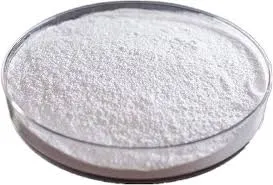
تشرینی یەکەم . 20, 2024 15:28 Back to list
mhec-methhyl hydroxyethyl cellulose
Understanding MHEC Methyl Hydroxyethyl Cellulose
Methyl Hydroxyethyl Cellulose (MHEC) is a non-ionic cellulose derivative widely utilized in various industries due to its unique properties. Derived from cellulose – a natural polymer abundant in plant cell walls – MHEC has gained significant attention as a multifunctional additive in construction, pharmaceuticals, food, and personal care products. This article explores the chemical structure, properties, applications, and benefits of MHEC.
Chemical Structure and Properties
MHEC is synthesized through the alkylation of cellulose with a combination of methyl and hydroxyethyl groups. The introduction of these groups enhances the solubility and stability of cellulose, making MHEC an injectable and versatile polymer. Its chemical structure consists of a backbone of glucose units, with methyl and hydroxyethyl groups attached at various positions, altering its physical properties.
One of the key characteristics of MHEC is its ability to dissolve in cold water, forming a clear, viscous solution. This solubility is a significant advantage over traditional cellulose ethers, which may require heat for dissolution. Moreover, MHEC exhibits excellent thickening, binding, and film-forming properties, making it an essential component in numerous formulations.
Applications of MHEC
1. Construction MHEC is widely used as a thickener and water retention aid in cement-based products such as tile adhesives, plaster, and mortars. Its ability to improve the workability of these mixtures allows for easier application, while its water retention properties enhance the curing time, leading to better adhesion and durability in the final product.
2. Pharmaceuticals In the pharmaceutical industry, MHEC is employed as a binder and thickener in tablet formulations. Its properties ensure that ingredients are evenly distributed, enhancing the efficacy of the medication. Additionally, it plays a crucial role in controlled-release formulations, allowing for a gradual release of the active ingredients over time.
3. Food Industry MHEC is recognized as a safe food additive, classified under the E-number system as E464. It is utilized in various food products as a thickening agent, stabilizer, and emulsifier. Its application in food ensures consistency, improves texture, and prolongs shelf life. Common products include sauces, dairy items, and bakery goods.
mhec-methhyl hydroxyethyl cellulose

4. Personal Care Products The cosmetic industry benefits from the use of MHEC as it provides thickening and stabilizing properties in lotions, creams, and gels. It helps maintain a uniform texture and enhances the sensory experience of personal care products. Additionally, MHEC's film-forming capabilities provide a protective barrier on the skin, contributing to its moisturizing properties.
Benefits of MHEC
The incorporation of MHEC into formulations comes with several advantages
- Versatility MHEC serves multiple roles in various industries, showcasing its multifunctionality and effectiveness in enhancing product performance.
- Environmental Safety As a derivative of natural cellulose, MHEC is generally recognized as safe (GRAS). Its non-toxic nature makes it suitable for applications requiring direct food and skin contact.
- Consistency and Stability MHEC provides consistent results, ensuring the stability of formulations over time. This reliability is crucial for manufacturers aiming to deliver high-quality products to consumers.
- Enhanced Performance From improving workability in construction materials to enhancing texture in food and cosmetic formulations, MHEC plays a vital role in elevating product quality and performance.
Conclusion
Methyl Hydroxyethyl Cellulose (MHEC) has emerged as an indispensable additive across various industries due to its unique properties and versatility. From construction to pharmaceuticals and food to personal care, MHEC's ability to enhance product performance while remaining environmentally safe has solidified its reputation as a multifunctional agent. As industries continue to seek sustainable and effective solutions, the demand for MHEC is likely to grow, driving further innovations in formulation and application.
-
What Is HPMC: Meaning,Applications
NewsApr.02,2025
-
Redispersible Polymer Powder (Rdp): Uses, Price, And Suppliers
NewsApr.02,2025
-
Hydroxyethyl Cellulose (Hec): Uses, Suppliers, And Buying Guide
NewsApr.02,2025
-
Hpmc (Hydroxypropyl Methylcellulose): Applications, Suppliers, And Buying Guide
NewsApr.02,2025
-
Guide to Mortar Bonding Agent
NewsApr.02,2025
-
Buying Guide to Redispersible Powder
NewsApr.02,2025







